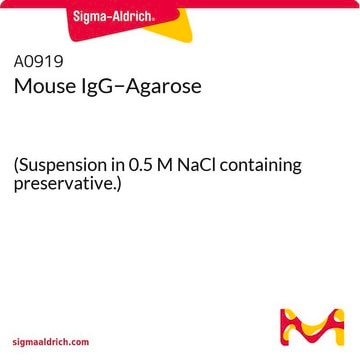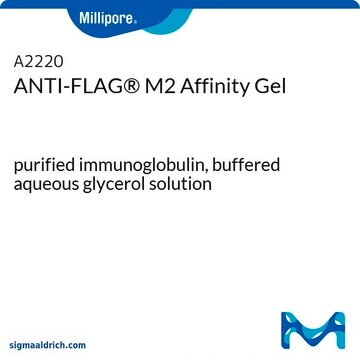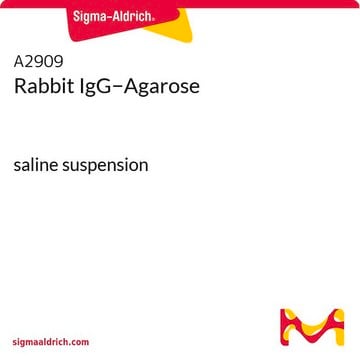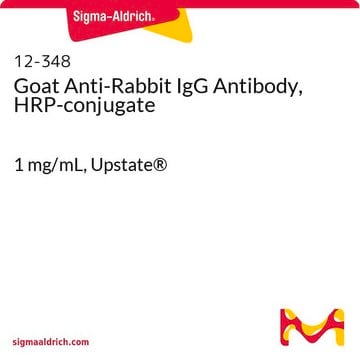推薦產品
生物源
mouse
品質等級
抗體表格
purified antibody
抗體產品種類
primary antibodies
無性繁殖
BuGR2, monoclonal
形狀
lyophilized
包含
≤0.1% sodium azide as preservative
物種活性
guinea pig, rabbit, rat, mouse, sheep
應無反應活性
amphibian, primate, avian
製造商/商標名
Calbiochem®
儲存條件
OK to freeze
同型
IgG2a
運輸包裝
ambient
儲存溫度
−20°C
目標翻譯後修改
unmodified
基因資訊
mouse ... Nr3C1(14815)
一般說明
Anti-Glucocorticoid Receptor (Ab-2), mouse monoclonal, clone BuGR2, recognizes ~94-97 kDa glucocorticoid receptor in mouse liver. It is validated for WB, ICC, IP & IHC (Frozen & paraffin sections).
Purified mouse monoclonal antibody generated by immunizing BALB/c mice with the specified immunogen and fusing splenocytes with P3-AgX-653 myeloma cells (see application references). Recognizes the ~94-97 kDa glucocorticoid receptor.
Recognizes the ~94-97 kDa glucocorticoid receptor in mouse liver tissue.
免疫原
Rat
partially purified, rat glucocorticoid receptor
應用
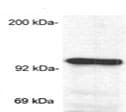
Frozen Sections (5 g/ml)
Immunoblotting (5 g/ml)
Immunocytochemistry (5 g/ml)
Immunoprecipitation (see comments)
Paraffin Sections (5 g/ml)
警告
Toxicity: Standard Handling (A)
外觀
Lyophilized from PBS, pH 7.2.
重構
Resuspend the lyophilized antibody with 0.1 ml sterile PBS, pH 7.2. Be careful to reconstitute the entire contents of the vial; during shipment and handling, portions of the lyophilized pellet may have become dislodged and may not be in the bottom of the vial. Following reconstitution, aliquot and freeze (-20°C). Avoid freeze/thaw cycles of solutions.
分析報告
Positive Control
mouse liver extract
mouse liver extract
其他說明
Does not cross react with androgen, progesterone, estrogen or mineralocorticoid receptors. Enzymatic digestion and immunoblot analysis has shown that this antibody reacts with the undigested 97 kDa glucocorticoid receptor, a 17 kDa DNA-binding trypsin fragment, and a 45 kDa steroid and DNA-binding chymotrypsin fragment. Immunocytochemical localization of the glucocorticoid receptor is observed in the cytoplasm and nucleus, even in the presence of hormone. This antibody has also been reported to work for immunoprecipitation. Antibody should be titrated for optimal results in individual systems.
Hussien, A., et al. 1997. Proc. Natl. Acad. Sci. USA94, 1521.
Pratt, W.B. and Toft, D.O., 1997. Endocrine Rev.18 306.
Schumacher, M., et al. 1996. Dev. Neurosci.18, 6.
Toran-Allerand, C.D. 1996. Dev. Neurosci.18, 36.
Weigel, N.L. 1996. Biochem J.319, 657.
Jones, K.J. 1994. Ann. N.Y. Acad. Sci.743, 141.
Arnold, A.P. 1990. in Hormones, Brain and Behavior in Vertebrates, ed. Balthazart, J. (Karger, Basel), 82.
Pratt, W.B. and Toft, D.O., 1997. Endocrine Rev.18 306.
Schumacher, M., et al. 1996. Dev. Neurosci.18, 6.
Toran-Allerand, C.D. 1996. Dev. Neurosci.18, 36.
Weigel, N.L. 1996. Biochem J.319, 657.
Jones, K.J. 1994. Ann. N.Y. Acad. Sci.743, 141.
Arnold, A.P. 1990. in Hormones, Brain and Behavior in Vertebrates, ed. Balthazart, J. (Karger, Basel), 82.
法律資訊
CALBIOCHEM is a registered trademark of Merck KGaA, Darmstadt, Germany
未找到適合的產品?
試用我們的產品選擇工具.
儲存類別代碼
11 - Combustible Solids
水污染物質分類(WGK)
WGK 1
閃點(°F)
Not applicable
閃點(°C)
Not applicable
分析證明 (COA)
輸入產品批次/批號來搜索 分析證明 (COA)。在產品’s標籤上找到批次和批號,寫有 ‘Lot’或‘Batch’.。
Mohammad M Khan et al.
Neuroendocrinology, 84(5), 317-329 (2006-12-05)
MNAR/PELP1 (see text) is a newly identified scaffold protein/coactivator initially thought to modulate nongenomic and genomic actions of the estrogen receptor; however, it has been recently shown to interact with multiple steroid receptors, including androgen and glucocorticoid receptors. In the
FoxA1 specifies unique androgen and glucocorticoid receptor binding events in prostate cancer cells.
Biswajyoti Sahu et al.
Cancer research, 73(5), 1570-1580 (2012-12-28)
The forkhead protein FoxA1 has functions other than a pioneer factor, in that its depletion brings about a significant redistribution in the androgen receptor (AR) and glucocorticoid receptor (GR) cistromes. In this study, we found a novel function for FoxA1
Nina M Patrick et al.
The Journal of steroid biochemistry and molecular biology, 167, 1-13 (2016-09-21)
Small molecule inhibitors of lysine deacetylases (KDACs) are approved for clinical use in treatment of several diseases. Nuclear receptors, such as the glucocorticoid receptor (GR) use lysine acetyltransferases (KATs or HATs) and KDACs to regulate transcription through acetylation and deacetylation
Vineela Kadiyala et al.
The Journal of biological chemistry, 288(40), 28900-28912 (2013-08-16)
Nuclear receptors use lysine acetyltransferases and lysine deacetylases (KDACs) in regulating transcription through histone acetylation. Lysine acetyltransferases interact with steroid receptors upon binding of an agonist and are recruited to target genes. KDACs have been shown to interact with steroid
Active Filters
我們的科學家團隊在所有研究領域都有豐富的經驗,包括生命科學、材料科學、化學合成、色譜、分析等.
聯絡技術服務
